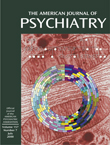Given space limitations, we focus here on the most important points of the previous letters. To settle one issue, Dr. Pope (but not Dr. Hudson) serves on the scientific advisory board of the False Memory Syndrome Foundation, but neither he nor any of the other authors has ever had any financial involvement with the foundation, nor does the foundation have any influence over our publications.
Turning to more scientific issues, the age and gender distribution of our respondents corresponds almost exactly to the overall population of practicing board-certified psychiatrists listed in
The Official ABMS Directory of Board-Certified Medical Specialists. This, together with our method of choosing the same-numbered entry from the same-numbered column on each of 406 pages plus the 82% response rate, argues strongly against the possibility of selection bias. We admit that we did not include control questions on the questionnaire, and we limited our sample to U.S. psychiatrists. But we have now collected comparable data on Canadian psychiatrists, showing that they report even higher levels of skepticism about the dissociative disorders than their U.S. counterparts
(1).
In short, our article was not an expression of our own opinions but simply a presentation of the opinions of randomly selected others. Some of the letter writers appear unhappy with these opinions, and they may prefer to interpret the glass as half full rather than half empty, but the numbers stand.
The statistical criticisms of Dr. Frankel and Ms. Span appear baseless. For example, the covariates assessed in our regression analysis—age, sex, professional orientation, and professional activities—are objective measures reasonably expected to be associated with attitudes toward the dissociative disorders. Indeed, other letter writers specifically argue that age, sex, and professional orientation may have influenced the responses. As for the sign test, this method assesses whether the median of the difference between matched pairs of observations is zero. It does not apply to differences between unmatched groups and is inappropriately offered by Dr. Frankel and Ms. Span.
The letter writers mention five previous surveys of attitudes toward dissociative identity disorder that we did not cite. Drs. Coons and Chu cite one of these studies (Dunn et al., 1994) as showing that “belief in dissociative identity disorder has increased to 80%.” Yet Drs. Coons and Chu fail to note that this study achieved a response rate of only 31%—making it virtually uninterpretable. In the four remaining studies, overall response rates ranged from 43% to 61%—all far below our rate of 82%. In the study that achieved the highest response rate among psychiatrists (Dell, 1988), 80% reported that they had experienced “strong,” “severe,” or “extreme” skepticism from other professionals regarding dissociative identity disorder.
Finally, regarding the comments of Drs. First and Pincus, we strongly agree that an “evidence-based process” should guide the choice of DSM categories, and indeed, for this reason, we concluded our report by citing reviews of the current evidence. We also agree that a simple vote or a single survey is inadequate for determining the inclusion or exclusion of a disorder in DSM-IV. However, the survey method is an appropriate design to assess whether there exists a consensus regarding a diagnosis. And here, for the two dissociative disorders that we examined, the answer is clearly negative.
We furthermore agree that the rules for the choice of DSM-IV categories, with their emphasis on empirical evidence, are fundamentally sound—although we confess some discomfort with the preference given to “keeping the status quo.” If there is fault, then, it lies not so much with DSM-IV itself but with those who cite DSM-IV as evidence for a consensus among psychiatrists regarding the diagnostic status and scientific validity of the dissociative disorders. Our evidence indicates that such a consensus simply does not exist.
This lack of consensus should hardly surprise two of our letter writers. Drs. Coons and Chu claim that “Although members of the False Memory Syndrome Foundation’s scientific advisory board label dissociative identity disorder a controversial diagnosis, they are in the minority.” Yet Dr. Chu himself has written that “Ever since the introduction of dissociative identity disorder…controversy has swirled around the nature and the validity of this diagnosis”
(2). Similarly, Dr. First has coauthored a recent book that refers to dissociative identity disorder as a “new fad diagnosis”
(3). Numerous major reviews appearing since the publication of DSM-IV have noted flaws in the evidence claiming to support dissociative amnesia and dissociative identity disorder and have seriously questioned the validity of both of these diagnoses
(4–
13).
In short, given both the questionable state of the evidence and the lack of consensus for dissociative amnesia and dissociative identity disorder in 1999, the editors of future editions of DSM will need to weigh carefully whether these diagnoses still merit inclusion.

